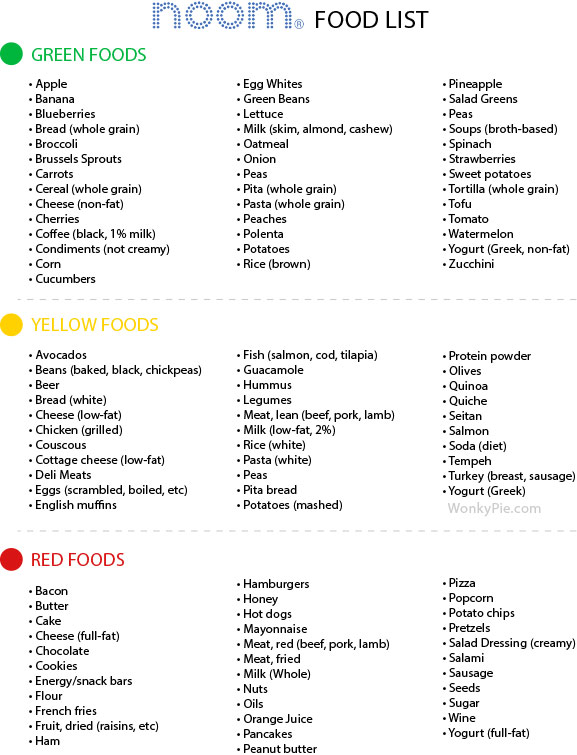Hey there! Today, I want to talk about a popular weight loss program called Noom. It’s gaining a lot of attention lately, and I thought it would be helpful to break down its color-coded diet program for you. Noom categorizes foods into three colors: green, yellow, and red. Each color represents a different level of calorie density and nutritional value.
Noom Green Foods
 Let’s start with the Noom green foods. These are the foods that you can enjoy without any guilt because they are low in calorie density and high in nutritional value. Think of them as the superstars of the Noom program. Some examples of Noom green foods include fresh fruits and vegetables, whole grains, lean proteins, and healthy fats like avocado and nuts. These foods provide you with essential vitamins, minerals, and fiber while keeping your calorie intake in check.
Let’s start with the Noom green foods. These are the foods that you can enjoy without any guilt because they are low in calorie density and high in nutritional value. Think of them as the superstars of the Noom program. Some examples of Noom green foods include fresh fruits and vegetables, whole grains, lean proteins, and healthy fats like avocado and nuts. These foods provide you with essential vitamins, minerals, and fiber while keeping your calorie intake in check.
Noom Yellow Foods
 Now, let’s move on to the Noom yellow foods. These are foods that you can enjoy in moderation. They have a slightly higher calorie density than the green foods but are still nutritious. Examples of Noom yellow foods include whole wheat pasta, brown rice, low-fat dairy products, and lean meats like chicken and turkey. These foods can be a part of a balanced diet, but it’s important to keep an eye on portion sizes to maintain your calorie goals.
Now, let’s move on to the Noom yellow foods. These are foods that you can enjoy in moderation. They have a slightly higher calorie density than the green foods but are still nutritious. Examples of Noom yellow foods include whole wheat pasta, brown rice, low-fat dairy products, and lean meats like chicken and turkey. These foods can be a part of a balanced diet, but it’s important to keep an eye on portion sizes to maintain your calorie goals.
Noom Red Foods
 Finally, we have the Noom red foods. These foods have a higher calorie density and are usually less nutritious compared to the green and yellow foods. Noom encourages you to limit your consumption of red foods as they can hinder your weight loss progress. Examples of Noom red foods include sugary snacks and desserts, processed meats, fried foods, and sugary beverages. It’s best to indulge in these foods occasionally and focus on incorporating more green and yellow foods into your daily meals.
Finally, we have the Noom red foods. These foods have a higher calorie density and are usually less nutritious compared to the green and yellow foods. Noom encourages you to limit your consumption of red foods as they can hinder your weight loss progress. Examples of Noom red foods include sugary snacks and desserts, processed meats, fried foods, and sugary beverages. It’s best to indulge in these foods occasionally and focus on incorporating more green and yellow foods into your daily meals.
Noom takes a holistic approach to weight loss by not just focusing on calorie counting but also promoting mindful eating and behavior change. They provide users with personalized coaching, educational resources, and a supportive community to help them achieve their weight loss goals.
Remember, everyone’s nutritional needs and weight loss journey are unique. It’s essential to consult with a healthcare professional before starting any new diet or weight loss program, including Noom. They can assess your individual needs and provide personalized guidance to ensure your journey is safe and effective.
If you’re interested in learning more about Noom or want to give it a try, I recommend visiting their official website for more information. They have a wealth of resources available, including meal plans, recipes, and success stories from real users.
I hope this breakdown of the Noom color-coded diet program has been helpful to you. Remember, sustainable weight loss is a journey, and finding a program that works for you is key. Good luck on your health and wellness journey!